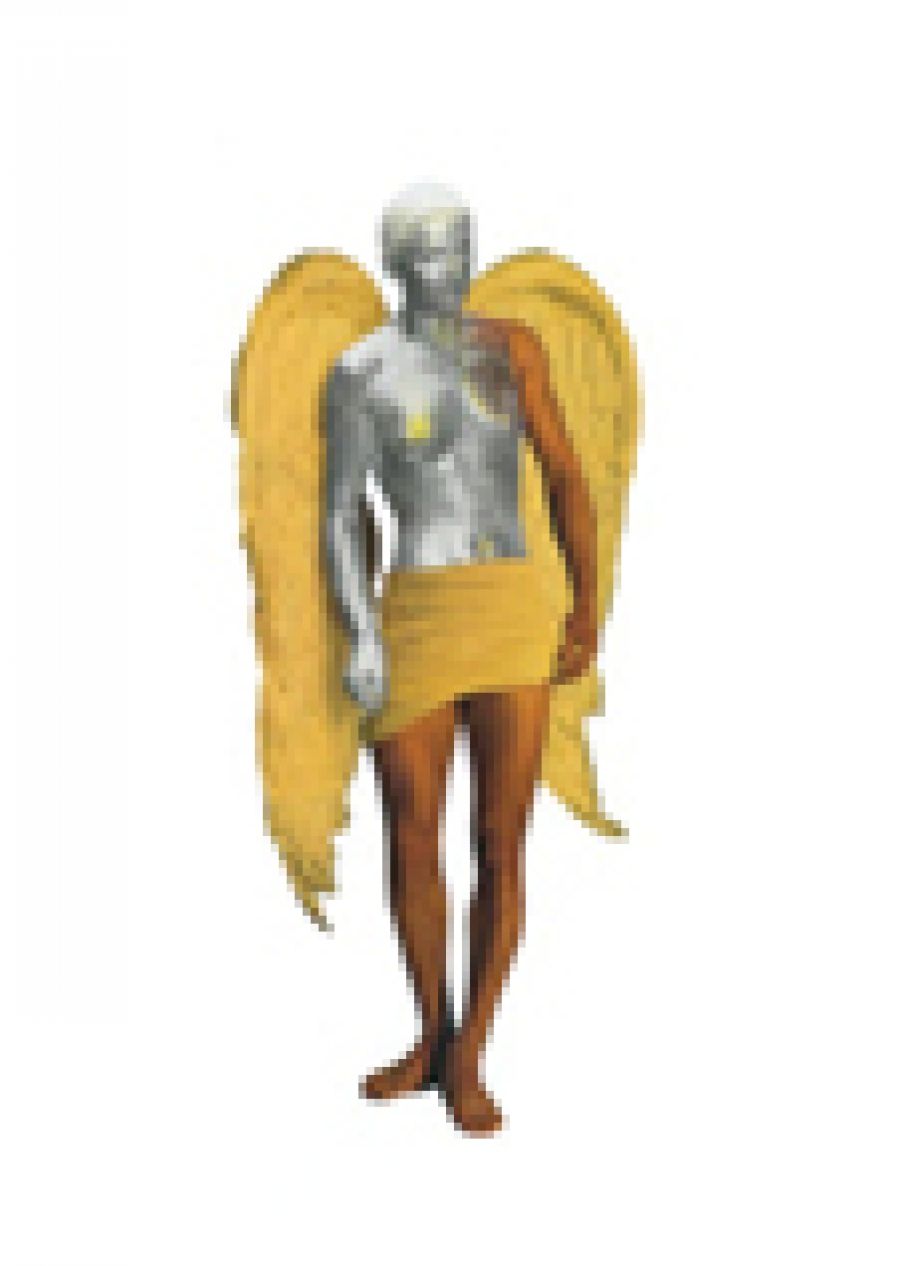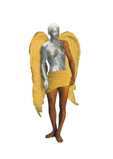
- Free Article: No
- Contents Category: Poetry
- Review Article: Yes
- Article Title: Photopoetry
- Online Only: No
- Custom Highlight Text:
This is an auspicious time to reissue a book by a Cypriot-Australian in a bilingual edition. Awareness of Cyprus in Australia, and of Australia in Cyprus, is at unprecedented levels following the spectacular performance in the 2006 Australian Open Tennis Championship of both Marcos Baghdatis and his colourful crowd of supporters from the Cypriot subset of the Melbourne Greek community. Bilingual (even trilingual) editions are the hallmark of Owl Publishing, but this fifteenth volume in its ‘Writing the Greek Diaspora’ series represents a new departure in its inclusion of high-resolution artwork: section four of the collection comprises sixteen photomontages, mostly statuesque combinations of objects and body parts.
- Book 1 Title: The Bird, The Belltower
- Book 1 Biblio: Owl Publishing, $25 pb, 179 pp
- Book 1 Cover Small (400 x 600):

The collection The Bird, the Belltower taps a deeper, autobiographical vein. It begins with the first of Lyssiotis’s two visits to his native Cyprus, whence he emigrated at the age of five. The visit was catalytic for his development as an artist, as Dimitris Vardoulakis relates in the introduction, inasmuch as Lyssiotis’s intentions to photograph the island were displaced into writing. This collection demonstrates the subsequent experimentation through which Lyssiotis brought images and words into a synthesis that Vardoulakis designates as ‘photopoetry’, ‘consist[ing] in the rejection of an absolute delimitation of the precincts of word and image’. For Vardoulakis, the wordless images of section four are no less [photo]poems than the contents of the other sections of this collection. Vardoulakis’s introductory essay explicates ‘photopoetics’ under some intriguing headings (‘The Haptic’, ‘Stasis’, ‘Extremities’, ‘Nothing’ and ‘Anachronisms’) with some help from Walter Benjamin, Eduardo Cadava and Georges Didi-Huberman. Some of the aphorisms produced there are confronting or baffling (e.g. ‘the precedence of the posture over the opening of the camera’s shutter vis-à-vis the world has turned the poem into an insane creation’), sometimes because of infelicitous English (e.g. ‘the repetition and lack of imagination of the cliché should not be allowed to lead to lament’). General readers able to read Greek may find Antonis Foukarakis’s translation of the essay more amenable.
By contrast, Lyssiotis’s texts are eminently readable and elegant in both English and Greek translation, whether (to use Vardoulakis’s terms) ‘lyrical’, as in sections one and three, or ‘prose poems’ as in sections two and five. But their linguistic simplicity does not limit their profundity as ‘meditations on Lyssiotis’s own craft’ nor, as Vardoulakis’s introduction essay illustrates, the scope they offer for complex theoretical elaboration.
Vardoulakis’s Greek translations are certainly thoughtful. He often prefers cultural correspondence to verbal equivalence: thus the key ‘under the welcome mat’ in ‘The Valley’ becomes the key ‘under the saucer’ in Greek – presumably the saucer is, in turn, under a flowerpot. However, facing translation is the most courageous format for bilingual editions, and nitpickers will doubtless rise to the provocation at several points where the translator has dared to unclutter the Greek of some details in the original English – I bristled at the reduction of ‘we severed our own hands’ to the equivalent of ‘our hands were severed’, but commiserated at the intractability of the recurrent puns on ‘snap’ in the texts about photography.
A translation issue might be seen to arise over the extent to which the poet’s voice has been captured in the Greek of this volume. The poet speaks Greek, and I understand that he was consulted in the translation process, although his Greek literacy skills are limited. Had Lyssiotis written the poems in Greek, they would almost certainly have a Cypriot dialectal colouring; but the translator Vardoulakis has quite properly asserted his own standard metropolitan Greek usage in rendering what is, after all, standard Australian English in the original texts.
Navigation of the contents of this book would have been facilitated by a (bilingual) table of contents, including a list of titles of texts or their first lines (since the prose texts have no titles). But perhaps this would have disturbed the apparently sensitive balance of words and imagery which has led to the banishment of words from the front and back covers, doubled the usual number of wordless fly-leaves in the book, and set the sixteen caption-free photomontages of section four against a background of pure white. ‘Photopoetry’ clearly obeys its own publishing conventions.


Comments powered by CComment